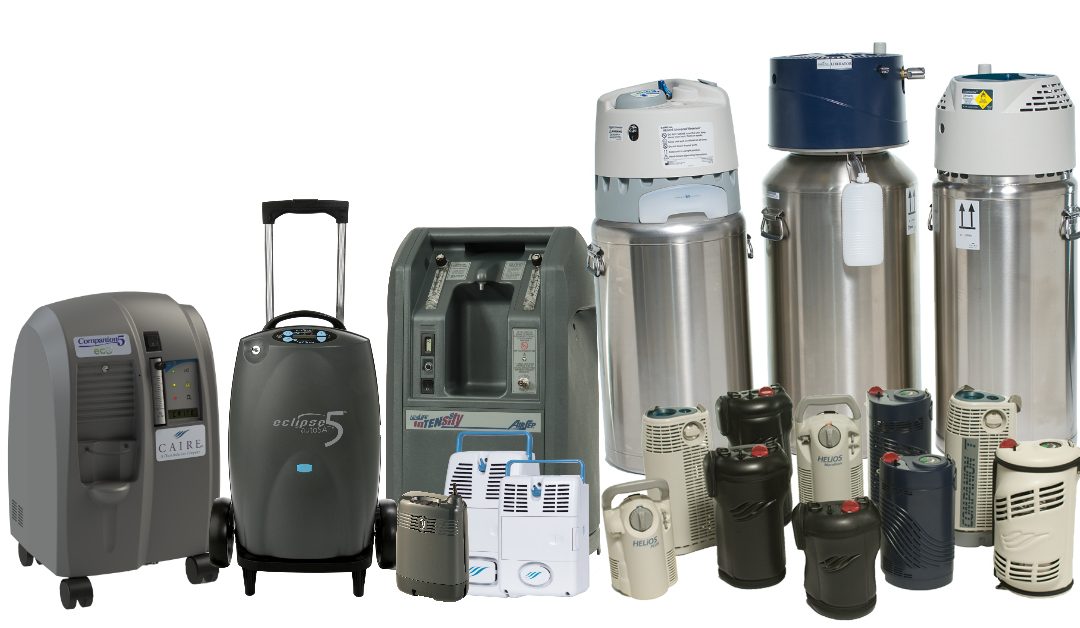Contributed by Jim Nelson, consultant to CAIRE Inc. ~
When lung disease progresses to the point that the patient needs supplemental oxygen, they enter a whole new world of terminology and bureaucracy. Gas bottles, regulators, concentrators, liquid oxygen, cannulas, and on and on…
So, Medicare and supplemental insurance will cover whatever I need, right? Unfortunately, it is not quite that simple. The oxygen-dependent patient quickly learns that other forces are at work. Just a few years ago, in an effort to help pay for the Affordable Care Act, or “ObamaCare,” the government decided to change the reimbursement procedures for “Durable Medical Equipment.” DME includes such things as hospital beds for use in the home, wheelchairs, walkers, and, for some reason, oxygen and its many methods of delivery to the lungs of the patient.
Nonetheless, the oxygen suppliers are required to fill your prescription, to furnish you with a large home concentrator and bottles of oxygen to provide the patient with the ability to leave the house for a period of time. They should give you whatever instruction you need to operate the equipment that will allow you to remain active. If you find that the equipment supplied to you is not sufficient to allow you to maintain a decent quality of life, talk to your doctor. He or she can write a prescription for more bottles, a higher flow concentrator, or whatever you may need.
Like most medical expenses, those who qualify for the original Medicare Part B will be reimbursed for 80% of the expenses of oxygen and the various equipment used to deliver it to the lungs. The reimbursement takes into account the normal annual deductible, or “Doughnut Hole.” The rest of the cost is borne either by the patient or by whatever supplemental insurance they may carry. The amount of the insurance reimbursement varies greatly.
Seemingly simple enough, right? Well, as mentioned above, it was determined that DME, including oxygen and related equipment should be subject to “competitive bidding.” So, suddenly the lowest bidder was to be awarded the opportunity to supply the stuff necessary to keep millions of lung disease patients breathing. Disturbing, but if the government regulates the industry, it should not be too much of a problem, right?
Disturbingly, wrong. The reimbursement rates from Medicare to the suppliers also changed. Most patients use oxygen in gaseous form, either from the familiar green bottles or from a home or portable oxygen concentrator. In most cases, Medicare would pay for the use of bottled oxygen, the necessary hoses, connecters, and cannulas, plus a concentrator. Unfortunately, they will rarely pay for more than one concentrator. So, if the patient has a large home concentrator, Medicare will not pay for an additional portable concentrator. It is unfortunate, as most patients really benefit from a concentrator that they can carry with them, use in a car, or plug into house electricity.
Also, the reimbursement rates for liquid oxygen, which allows greater portability and a greater flow rate than gas, were cut drastically. In fact, the reimbursements were dropped to the point that the supplying of liquid oxygen became a losing proposition for the low bidders.
Medicare has published a list of questions and answers about the availability of supplemental oxygen. The site is at: http://www.yourlunghealth.org/headlines/2008/12/medicare-oxygen_rules.cfm
Jim Nelson is a double lung transplant recipient and a patient advocate for COPD patients throughout the U.S. and around the world. He and his wife, Mary, are well known patient advocates and brand ambassadors for those organizations who tirelessly endeavor to help those individuals who suffer from a variety of respiratory diseases and the caregivers who support them.
If you have been prescribed oxygen therapy, learn more about CAIRE by visiting www.cairemedical.com or calling 1-877-704-0878 to talk to an oxygen advisor.
When using any oxygen therapy device please consult the applicable product instructions for use for product indications, contraindications, warnings, precautions, and detailed safety information.

